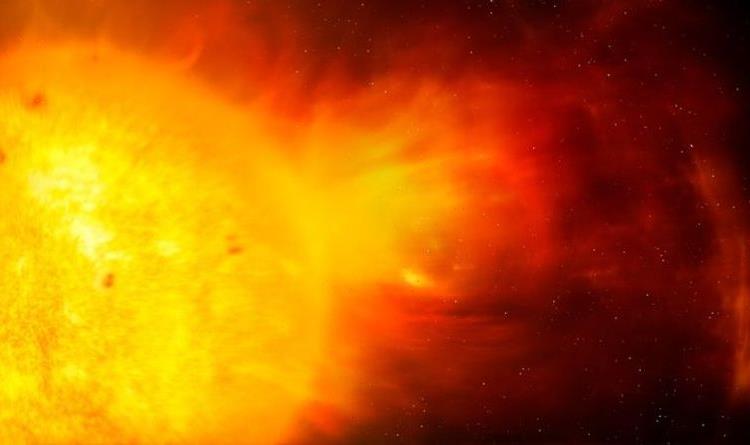NASA observatory spots flurry of solar flares
We use your sign-up to provide content in ways you’ve consented to and to improve our understanding of you. This may include adverts from us and 3rd parties based on our understanding. You can unsubscribe at any time. More info
The Met Office and the National Oceanic and Atmospheric Administration (NOAA) both recorded a strong coronal mass ejection (CME) from the Sun that the agencies predict will “graze” the Earth. Dr Tamitha Skov, a space weather physicist, warned that this could cause amateur radio blackouts as well as GPS issues. She wrote on Twitter: “Our Sun sends a Thanksgiving Holiday gift.
“NOAA and the Met Office predict a solar storm launched yesterday will graze Earth to the south late November 27.
“Likely not a big storm but a sporadic aurora is possible at mid-latitudes.
“Expect radio and GPS issues on Earth’s nightside.”
NOAA confirmed that “satellite systems may experience significant charging resulting in increased risk to satellite systems.”
And SpaceWeather.com warned: “First-look data suggest it might deliver a glancing blow to Earth’s magnetic field.”


The warnings came after a filament of magma burst out of a canyon 50,000 miles long with towering walls of red-hot plasma on the Sun on Wednesday.
Debris from the blast formed a coronal mass ejection (CME), a large expulsion of plasma and magnetic field from the Sun’s outer layer that can bring with it a geomagnetic storm.
A geomagnetic storm can cause havoc if it collides with the Earth’s atmosphere.
Astronomers at SpaceWeather.com explained: “A geomagnetic storm is a major disturbance of Earth’s magnetosphere that occurs when there is a very efficient exchange of energy from the solar wind into the space environment surrounding Earth.
“These storms result from variations in the solar wind that produces major changes in the currents, plasmas, and fields in Earth’s magnetosphere.”

The bursts can send a stream of electrical charges and magnetic fields as far away as earth, travelling as fast as three million miles per hour.
CME’s tend to produce the strongest type of geomagnetic storm.
Ranked from G1 minor to G5 extreme, even the lowest intensity G1 storm, which is what we may experience tomorrow, can cause major disruption if it comes into contact with a satellite.
When this happens, it can cause disturbance to satellite operations and could result in weak power grid fluctuations.
But these geomagnetic storms can also put spectacular auroras on display for lucky spectators who don’t often get to spot these phenomena.
DON’T MISS
Archaeology breakthrough: 13-year-old makes 1300BC hoard discovery [REVEAL]
Maya breakthrough with incredible underwater find [INSIGHT]
La Palma volcano warning: ‘Unstoppable’ lava clocked at record speeds [REPORT]


Earlier this month, forecasters predicted that a solar storm would bring the aurora borealis, more commonly known as the Northern Lights, to the skies of northern Scotland.
Back in 1859, the strongest ever solar storm recorded battered the Earth in what is known as The Carrington Event.
A powerful geomagnetic storm on 1–2 during solar cycle 10 saw a CME strike the Earth’s magnetosphere that sent telegraphs haywire.
If a storm of that magnitude struck Earth today it would no doubt cause far more disruption and could lead to power outages that may last for a number of days.
Source: Read Full Article
